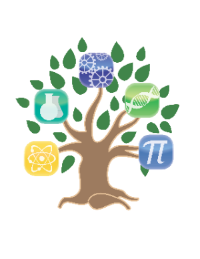
ECLIPSE INFO
Saturday, October 14, 2023 8:09am - 10:52am
Maximum at 9:26:25 AM PST
What to Expect
An annular solar eclipse happens when the Moon passes between the Sun and Earth while it is at its farthest point from Earth. Because the Moon is farther away from Earth, it appears smaller than the Sun and does not completely cover the star. This creates a “ring of fire” effect in the sky.
Where and When
IN SAN DIEGO The partial eclipse will begin at 08:09:11 on Saturday, October 14th, 2023. The moment the edge of the moon touches the sun is called “first contact”. At 09:26:25, the deepest point of the eclipse, with the sun at its most hidden, happens. This is called the Maximum Eclipse. At 10:52:47, the Partial eclipse ends, where the moon's edge leaves the sun's edge.
On Saturday, Oct. 14, 2023, the annular eclipse will begin in the United States, traveling
from the coast of Oregon to the Texas Gulf Coast. Weather permitting, the annular
eclipse will be visible in Oregon, Nevada, Utah, New Mexico, and Texas, as well as
some parts of California, Idaho, colorado, and Arizona.
The annular eclipse will continue on to Central America, passing over Mexico, Belize,
Honduras, and Panama. In South America, the eclipse will travel through Colombia before
ending off the coast of Natal, Brazil, in the Atlantic Ocean
Viewing Safety
The Sun is never completely blocked by the Moon during an annular solar eclipse. Therefore, during an annular eclipse, it is never safe to look directly at the Sun without specialized eye protection designed for solar viewing. You can also use an indirect viewing method, such as a pinhole projector. During an annular eclipse, it is never safe to look directly at the Sun without specialized eye protection designed for solar viewing. Review these safety guidelines to prepare for Oct. 14, 2023.
Free Solar Filters!
Solar Viewer cards and glasses are available for pickup in Building H near the tutoring center, courtesy of the Cuyamaca Astronomy department (supplies are limited and we will hand them out until they are gone), Starting October 5th through the 13th. If you would like to receive eclipse viewers and are unable to make regular campus hours, Please email Alexandra.Neri@gcccd.edu to schedule a pickup time.


STEM Guided Pathway Program
In 2016, the U.S Department of Education awarded Cuyamaca College a 5-year, Hispanic Serving Institution Title III STEM Grant to fund enhanced community college experiences for students from diverse backgrounds who are interested in careers in allied health, engineering, chemistry, biology, and physics. Through a series of longitudinal timed supports, STEM Guided Pathways Scholars received support services designed to develop the academic and professional skills necessary to succeed in community college and transfer to a STEM baccalaureate program. Additionally, HSI funding allowed for the expansion of and refurbishment of STEM classrooms and the purchase of equipment to increase capacity, as well as training and development for faculty to expand equity minded, project-based learning practices across STEM disciplines.
This program is made possible by funding from the U.S. Department of Education, Hispanic-Serving Institutions Division, Title III Grant Award #P031S160149.